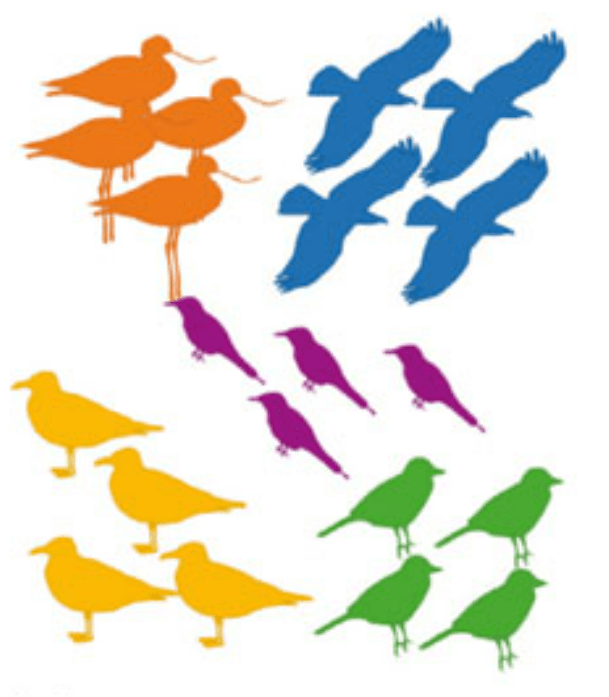What is biodiversity?
The number and variety of organisms
What is a species?
A group of organisms that can interbreed in nature and produce fertile offspring
What is a Niche?
The role an organism plays in a community, such as the food it eats, where it lives, how it interacts with other species, and where it reproduces.
What is variation?
Differences between living things
What is an adaptation?
A change that helps an organism survive
Where on the earth do we find the most diversity?
Near the equator
What is Speciation?
The making of different types of species
Narrow and broad.
Name 2 causes of variation
Genes and the Environment (Nature vs. Nurture).
What are the 2 main categories/types of adaptations?
Structural and behavioural
Name 3 types of diversity (100 points each). 100 bonus points if you give an example of each.
Ecosystem Diversity, Species Diversity, and Genetic Diversity
Name the 3 types of separation that can lead to speciation
Geographical, Behavioural, and Time
What are the terms used to describe organisms in a narrow niche and organisms in a broad niche?
Specialists (narrow niches) and Generalists (broad niches)
What type of variation is hair length?
Continuous Variation
Explain the 2 kinds of behavioural adaptations. Bonus points for giving examples of each.
Instinctive: Happen natural and don't need to be taught.
Learned: Need to be taught.
Name the most important benefit of biodiversity
More variation makes it more likely that individuals of a given species will survive a hardship such as a disease or natural disaster.
What are the 4 steps (100 points each) of speciation?. Bonus points for having them in the correct order and giving a quick explanation of each.
Separation, Adaptation, Genetic Differentiation, and Re-introduction
What are the 3 types of Symbiosis?
Commensalism, Mutualism, and Parasitism.
Define discrete variation and give an example.
Discrete variation is variation that has a limited number of options. Examples: hair colour, blood type, hitch-hikers thumb, snapdragon petal colours, report card grades (1,2,3, or 4), ability to roll your tongue, ability to raise one eyebrow
What are 4 types of structural adaptations?
- Camouflage
- Mimicry
- Chemical Defense
- Body Parts/Coverings
Calculate the biodiversity and state if this a healthy ecosystem or not.

1/5 or 0.2. This is an unhealthy ecosystem because the biodiversity index is less than 0.5.
In 3 sentences or less, summarize how and why the Galapagos finches differentiated into different species?
Each island in the Galapagos is different and over time, finches adapted to a variety of different environments and food sources. This resulted in differences in their features and behaviours (such as various beak types, body sizes, feather, wing spans, feeding behaviours, and mating song types).
Define and give an example of Commensalism, Mutualism, and Parasitism.
Commensalism: one species benefits and the other is unharmed, E.g. Barnacles on a Scallop.
Mutualism: both species benefit, E.g. clownfish and anemone
Parasitism: one species benefits and the other is negatively affected, E.g. mosquitoes on humans
Draw an example of a graph of discrete variation and an example for continuous variation
Explain how adaptations and natural selection are related
Traits that can be passed down allow organisms to adapt to the environment better than other organisms of the same species. This enables better survival and reproduction compared with other members of the species, leading to the natural selection of those adaptations.